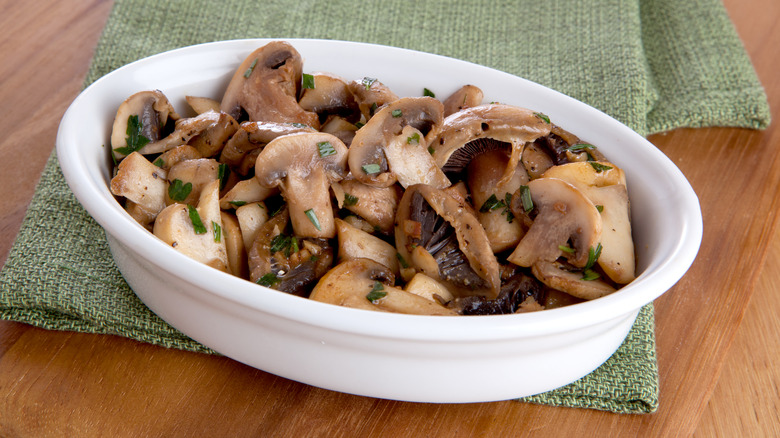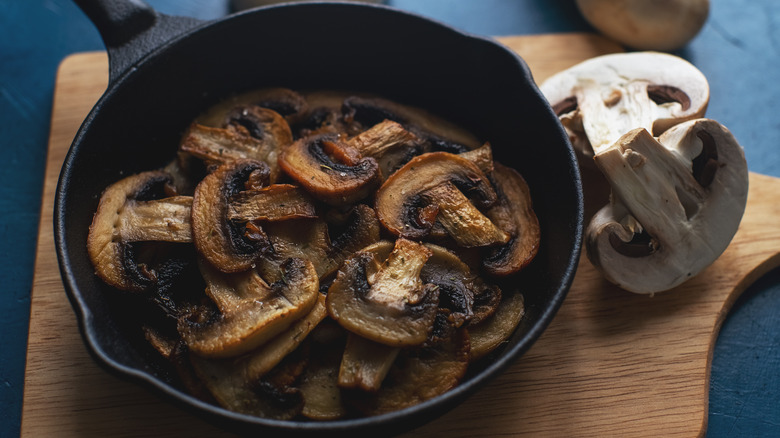How To Keep Mushrooms From Soaking Up Too Much Oil
Edible mushrooms are often more than 90% water. And yet, somehow they still seem to soak up all of the oil in the frying pan. Why do they get so darn oily when you cook them? It's because of their spongy texture which comes courtesy of zillions of little air pockets. (Okay, maybe not that many, but math's not our strong suit.) So how do you prevent mushrooms from sucking up all of the cooking oil?
For help with this dilemma, we turned to Chef Rob Rubba. He's a chef who works at a Washington, D.C. restaurant called Oyster Oyster, which is the proud recipient of a Michelin star. While you might think that mollusks would the spécialité de la maison, this kind of oyster is actually an optional add-on to the restaurant's prix-fixe menu. As its focus is primarily on vegetarian dishes, there seems to be more attention paid to the oyster mushroom, instead.
While Rubba acknowledged that the best way to sauté mushrooms will vary with what type of mushroom you use, one universal truth he mentioned is that, "It's ideal to start with a very hot pan." (Keeping the temperature too low is one of the cooking mistakes that will ruin your mushrooms.) Once you put your mushrooms in the pan, "Keep adding a small amount of cooking oil through the process, finishing with butter at the end." Once you have your perfectly sautéed mushrooms, we'd suggest serving them on toast with a creamy, cheesy Mornay sauce.
It's also possible to cook mushrooms with little to no oil
Rubba is no doubt a mushroom expert, and even he acknowledges that there are different strokes for different 'shrooms. While the 'add oil as you go' technique is a good method to use for most mushrooms, it may also be possible to cook mushrooms using hardly any oil. One method that seems to work particularly well with sliced button mushrooms is to cook them in a pan with about ¼ cup of water per pound of mushrooms. While the pan may be overcrowded at the start, after a few minutes of steaming, the mushrooms should shrink considerably. At this point, you'll only need ½ teaspoon of oil to brown them, though you can feel free to use a generous amount of butter to make a pan sauce once they're cooked.
It's also possible to make dry sautéed mushrooms which, as the name implies, are cooked with no added liquid. Dry sautéing works best with fleshier varieties of mushrooms since they contain a sufficient amount of their own moisture, but many supermarket mushrooms — button, chanterelle, cremini, oyster, porcini, and portobello — fit into this category. While you'll start with a very hot pan, you may need to lower the heat if the mushrooms brown too quickly. Once the mushrooms have released their moisture (about 5 to 10 minutes) you can add some butter to flavor them, but it's not necessary for cooking purposes.

